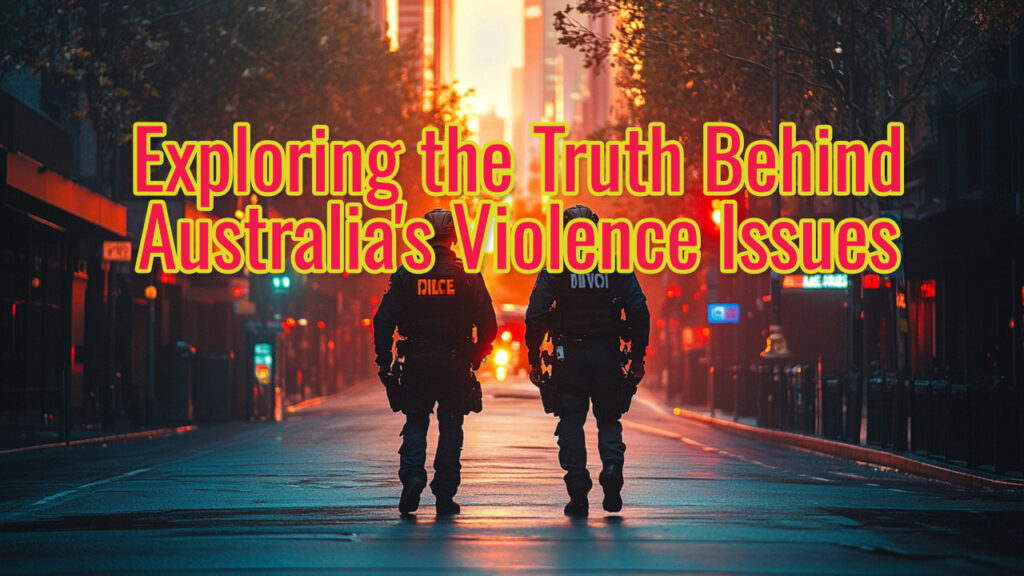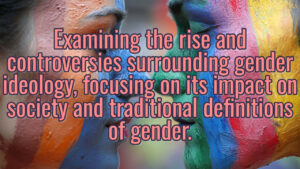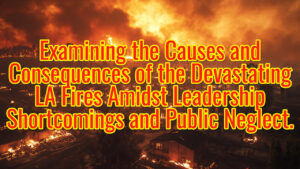Understanding Australia’s Violence Narrative: Facts vs. Fiction
=============================================================
Recent violent crimes (in Australia), particularly the Bondi Junction stabbing spree, have ignited public discourse on femicides and the perceived crisis in domestic violence. This blog explores the factual backdrop behind these narratives: analyzing statistics, cultural contexts, and societal implications. However, although these discussions are critical, they also spark heated debates. Because of this, it’s essential to approach the topic with care (and consideration).
Table of Contents
—————–
* [🔍 Overview of Recent Violent Crimes in Australia]
* [🧠 Details about the Perpetrator, Joel Couhi]
* [📢 Public Reactions and Discussions Around Femicides]
* [🚨 Clarification on the Term ‘National Emergency’]
* [📊 Presentation of Homicide Statistics in Australia]
* [📈 Insights from UN Data on Intentional Homicides]
* [📉 Historical Context of Homicide Rates in Australia]
* [📊 Comparison of Australia’s Homicide Rate to Neighboring Countries]
* [🧬 Cultural Factors Influencing Homicide Rates]
* [🔍 Nature of Violent Men and Their Backgrounds]
* [📈 Increase in Reported Sexual Assaults vs. Declining Homicide Rates]
* [🚨 Critique of Crisis Narratives and Political Implications]
* [👶 Societal Fear of Violence and Its Impact on Children]
* [📝 Conclusion: The Need for Rational Discourse on Violence]
* [🙏 Acknowledgment and Thank You]

🔍 Overview of Recent Violent Crimes in Australia
————————————————-
Australia has (recently) faced a troubling series of violent crimes. The most alarming incident was the Bondi Junction stabbing spree on April 13, where six people were attacked, resulting in five fatalities (primarily) from women. This event has raised significant concerns about public safety and the prevalence of violence, especially against women. Although the incidents are shocking, many are left wondering what (can be done), but solutions remain elusive because of complex social issues.
The Bondi Junction incident (1) is not isolated; it has occurred alongside other violent acts (2) across the nation, sparking debates about the underlying causes and societal implications of such crimes. These events have ignited a national conversation about the nature of violence in Australian society. However, this raises questions about addressing these issues because understanding the root causes is essential. Although some may argue that these incidents are outliers, the frequency suggests otherwise.
### Recent Crime Statistics
Statistics indicate
(1) a fluctuating yet concerning trend in violent crimes. While the overall homicide rates have
(2) seen a decline over the years;
Isolated incidents, such as the Bondi Junction stabbing, can skew public perception and fuel fears of a broader crisis.
* The Bondi Junction attack involved multiple victims, highlighting the random and public nature of some violent crimes.
* Public reaction has focused heavily on the gendered nature of violence, particularly against women.
🧠 Details about the Perpetrator, Joel Couhi
——————————————–
Joel Couhi—the perpetrator of the Bondi Junction stabbing spree—was reported to have a complex history of mental health issues
(1). Suffering from schizophrenia
(2) he had not been adhering to his prescribed medication; this likely exacerbated his condition.
However, some argue that his untreated illness influenced the circumstances surrounding his actions, although others contend that personal responsibility must still be acknowledged. Because of these factors, it is essential to understand the broader implications of mental health on criminal behavior.
Understanding Couhi’s (background) is crucial in analyzing the motivations behind his violent actions. His history suggests a pattern of untreated mental illness; however, this raises questions about support systems in place for individuals with such conditions. Although some may argue otherwise, the lack of adequate support is concerning because it impacts many lives.
### Mental Health and Violence
Couhi’s case underscores
(1) the intersection of mental health and violent behavior; however, not all individuals with mental health issues commit violent acts. Couhi’s failure to manage his condition (because of various factors) led to tragic outcomes. Although this may not represent every situation, it highlights a significant societal concern.
* There is a pressing need for better mental health resources and intervention strategies to prevent such incidents.
* The stigma surrounding mental illness often complicates discussions about violence, as many fear being associated with the negative behaviors of a few.
📢 Public Reactions and Discussions Around Femicides
—————————————————-
The public reaction (to the Bondi Junction incident) has been intense, with many activists drawing attention to the rising number of femicides (in Australia). The term ‘femicide’ refers to the killing of women—often by intimate partners—and has become a focal point in discussions about gender-based violence. However, this issue is complex because it encompasses various societal factors. Although the outcry is significant, some may argue that more action is needed. But, the dialogue surrounding this matter is crucial for raising awareness and promoting change.
Activists are demanding (1) more robust legislative measures to protect women and address domestic violence; however, the call for a national emergency declaration reflects a growing urgency among advocacy groups. Although this term has specific legal implications in Australia, this situation highlights the pressing need for action because advocates feel that current measures are insufficient.
### Legislative Action and Public Demands
There is a strong push for legislative reforms (aimed at enhancing protections for women). This includes calls for stricter penalties for domestic violence; however, it also seeks improved support systems for victims (because such measures are essential). Although progress has been made, challenges remain.
* Many advocate for educational programs that address the root causes of gender-based violence.
* Public forums and discussions are increasingly focusing on ways to create safer environments for women.
🚨 Clarification on the Term ‘National Emergency’
————————————————-
Officials have been (cautious) in their use of the term ‘national emergency.’
(1) Concerning violence against women. In Australia, this term (traditionally) refers to natural disasters; however, it has specific legal implications that can complicate its use in social issues
(2) Although some may argue for a broader interpretation, the constraints remain. The term carries weight and can evoke strong responses, but its application in such contexts must be (carefully) considered.
Prime Minister Anthony Albanese has chosen to characterize the situation (which many perceive) as a ‘national crisis’; he acknowledges the seriousness of violence but refrains from invoking an emergency framework that could potentially lead to drastic measures.
### Context of the Term
This distinction is crucial (for understanding) the government’s approach to addressing violence against women. By framing it as a crisis rather than an emergency, officials can focus on systemic changes; however, they may overlook immediate, potentially reactive measures (because of this). Although focusing on systemic issues is essential, it must not ignore urgent needs.
* This approach allows for more comprehensive strategies that address the root causes of violence.
* It emphasizes the importance of long-term solutions over short-term fixes.
📊 Presentation of Homicide Statistics in Australia
—————————————————
Despite recent high-profile violent incidents
(1) Australia’s homicide rate has declined over the past few decades. This trend is crucial for understanding the broader context of violence (in the country). However, many people remain concerned about safety because the perception of danger often overshadows actual statistics. Although the numbers indicate progress, public fear persists
(2) In 2021 (the Australian Bureau of Statistics reported) 193 murders, with a slight rise to 377 recorded incidents in 2022. However, it’s essential to analyze these numbers in context (because they do not necessarily indicate a trend of increasing violence). Although some may interpret the figures differently, this data requires careful examination.
### Year-to-Year Variations
Year-to-year variations (in homicide statistics) can be misleading: these statistics often reflect unpredictable fluctuations (rather than a consistent upward trend). However, such data may be misinterpreted because they lack a stable trajectory. Although the numbers fluctuate, this does not necessarily indicate a worsening situation but rather an inconsistency in reporting methods.
* For example, 2021 had the lowest recorded homicide rate since 1993.
* This suggests that while isolated incidents may capture public attention, they do not represent a consistent increase in violence.
📈 Insights from UN Data on Intentional Homicides
————————————————-
Data (from the United Nations Office on Drugs and Crime) provides a broader perspective on Australia’s homicide rates. In 2021, the UN recorded 193 intentional homicides, which aligns with the Australian Bureau of Statistics’ figures. However, discrepancies exist between these numbers (because they rely on different methodologies). Although the statistics are similar, it is essential to consider their context.
However (the UN’s 2022 data showed a rise to 218 intentional homicides) — prompting further analysis of underlying factors contributing to these numbers. This phenomenon is concerning because it highlights a troubling trend in violence. Although many variables can influence such statistics, the need for effective intervention becomes increasingly evident.
### Comparative Analysis of Homicide Rates
When analyzing homicide rates (over time), it becomes evident that Australia has experienced a significant decline in violence compared to previous decades. The UN data indicates that the number of intentional homicides.
(1) was much higher in the past; however, the population has increased. Although this trend suggests improvement, it is vital to consider (the underlying factors) that may contribute to such changes.
* This long-term decline in homicide rates suggests that Australia is becoming a safer society overall.
* Understanding these trends in the context of social and economic factors is crucial for developing effective prevention strategies.
📉 Historical Context of Homicide Rates in Australia
—————————————————-
Examining (the) historical context of homicide rates reveals a clear downward trend (over) the past few decades. Peak rates in the early 1990s have significantly decreased, indicating societal safety improvements. However, it’s essential to understand (that) these changes occur because of various factors influencing crime dynamics. Although the reduction is notable, challenges persist.
This historical perspective (which is essential) for understanding current fears surrounding violence is significant because it demonstrates that (although) isolated incidents garner media attention, the overall trend is (in fact) one of improvement. However, this point is often overshadowed by sensationalized coverage.
### Gendered Analysis of Homicide Rates
When analyzing homicide rates
(1) it is essential to differentiate between male and female victims. Historically, female homicide rates have been significantly lower than those of males
(2); typically around half.
However, this disparity may not fully reflect the underlying complexities of gender dynamics in violent crime. Although the statistics suggest a clear divide, the nuances of each case (because they involve various socio-economic factors) cannot be overlooked.
* In 2022, the female homicide rate was 0.51 compared to 1.18 for males, reflecting a persistent trend.
* This discrepancy highlights the need for targeted interventions that specifically address violence against women.
📊 Comparison of Australia’s Homicide Rate to Neighboring Countries
——————————————————————-
When comparing (Australia’s) homicide rate to those of neighboring (New Zealand) and other nations, differences become apparent. Australia’s homicide rate has remained relatively stable (and low), especially when contrasted with New Zealand (which reported a slightly higher homicide rate of 1.03 in 2020 and 1.11 in 2021). However, this stability is noteworthy (because) it highlights a significant divergence between the two countries. Although the figures are close, they reveal underlying trends that merit further examination.
This positions Australia (1) at a competitive advantage, with rates of 0.86, 0.74, and 0.83 during the same years. The comparison highlights that, although both countries are relatively safe, Australia’s homicide rate is consistently lower. However, this difference may be attributed to various sociocultural factors, further complicating the analysis.
* Australia is safer in the Pacific region, reflecting effective law enforcement and societal norms.
* Comparing Australia’s homicide rates with those of countries in Western Europe shows similar trends, with Australia often falling in the middle range.
### Global Context of Homicide Rates
Globally (1), homicide rates vary significantly. For instance, while Australia enjoys a low rate, countries like the United States experience dramatically higher rates—recorded at 6.38 in 2022. In contrast, nations like Japan and Singapore report some of the lowest homicide rates globally (0.23 and 0.12, respectively). However, this disparity raises questions about societal factors influencing these statistics. Although many variables contribute to these differences, the underlying reasons remain complex.
This stark contrast
(1) highlights the influence of cultural, social, and economic factors on violence rates worldwide; however, it also raises questions about systemic inequalities. Although such factors are crucial, some may argue that personal choices play a significant role in these dynamics. Furthermore, this discrepancy could be attributed to varying levels of enforcement
(2) and societal attitudes towards violence. Despite these complexities, it is essential to acknowledge that addressing these issues requires a multifaceted approach
(3) because understanding the interplay of these factors is vital for practical solutions.
* Japan’s homicide rate is among the lowest due to its strong societal norms and lower levels of inequality.
* The U.S. faces challenges linked to social disparities, gun accessibility, and cultural attitudes toward violence.
🧬 Cultural Factors Influencing Homicide Rates
———————————————-
Cultural contexts (indeed) play a significant role in shaping homicide rates. In societies where collectivism and cooperation are valued—such as Japan and Singapore—the homicide rates are considerably lower. Conversely, cultures that emphasize individualism and honor (for example), like certain regions in the United States, often experience higher rates of violence. However, this does not mean that all individualistic societies have high homicide rates, although some may. Because of these varying factors, understanding the cultural underpinnings is essential for analyzing such trends.
Australia—characterized by a culture of dignity—encourages negotiation and tolerance over violent responses. This cultural backdrop helps to maintain lower homicide rates compared to (other) nations with different social norms; however, the effectiveness of this approach can vary. Although some may argue otherwise, the overall environment fosters peace. Because of this, many view Australia as a model for conflict resolution.
* Understanding these cultural dynamics is essential for developing targeted interventions.
* Strategies that respect cultural contexts may yield better outcomes in violence prevention.
### Impact of Socioeconomic Factors
Socioeconomic stability
(1) also influences homicide rates; countries with effective social safety nets and low poverty levels tend to experience lower violence rates. Australia
(2) benefits from these protective factors because of its robust economy and social services. However, this relationship is complex
(3) and can vary significantly across different regions.
Although many nations strive for similar outcomes, the effectiveness of such systems may differ significantly.
Conversely (nations with significant inequality and poverty) often struggle with higher rates of violence; this connection underscores (the importance of addressing) socioeconomic disparities because it serves as a means of reducing violence. However, addressing these issues can be complex, although necessary for long-term peace.
🔍 Nature of Violent Men and Their Backgrounds
———————————————-
Examining (the) backgrounds of violent men reveals troubling patterns. Many perpetrators of homicide—particularly those involved in domestic violence—often have histories of mental health issues (1), substance abuse, and socioeconomic disadvantage. However, this correlation is complex; because these factors usually intertwine, they complicate our understanding of violence. Although some may argue otherwise, it is essential to recognize these underlying issues.
Reports indicate that (1) significant numbers of these individuals have been identified by healthcare or criminal justice systems as potential threats; however, intervention measures may not be sufficiently robust (this is concerning). Although some efforts have been made, their effectiveness remains questionable (because of various factors).
* Understanding the profiles of violent men can help inform preventative strategies.
* Targeted programs addressing mental health and substance abuse may reduce the likelihood of violent behavior.
### Challenges of Preemptive Interventions
Identifying potential threats (1) is crucial; however, the challenge lies in determining appropriate intervention strategies (without infringing on civil liberties). The balance between public safety and individual rights must be carefully managed, although this can be pretty complex. Because of these considerations, it becomes essential to navigate these issues delicately.
Additionally, societal stigma (which often surrounds mental health) can complicate these discussions, leading to reluctance to seek help. However, this reluctance (frequently exacerbated by fear) may deter individuals from pursuing necessary support because they fear judgment. Although stigma exists, it is crucial to foster open dialogues about mental well-being, as this can encourage more people to seek assistance.
📈 Increase in Reported Sexual Assaults vs. Declining Homicide Rates
——————————————————————–
The significant increase in reported sexual assaults (over the past three decades) juxtaposed with declining homicide rates presents a complex narrative. Recorded sexual assaults have nearly doubled; this raises concerns about the safety of women in society. However, although the homicide rates are declining, the rise in sexual assaults complicates the overall picture. Because of this, many individuals question the effectiveness of current measures to protect women, but the relationship between these two trends is not straightforward.
However (this) increase may be attributed to improved reporting mechanisms and changing societal attitudes towards sexual violence rather than an actual rise in incidents because the perception of such issues has evolved. Although some might argue otherwise, it is essential to consider the context.
* The correlation between rising reports of sexual assault and declining homicides indicates a shift in how society addresses violence against women.
* Understanding this dynamic is crucial for developing effective policies and support systems for victims.
### Interpreting Sexual Assault Statistics
Analyzing (sexual assault) statistics requires caution; increased reporting does not necessarily equate to a rise in actual incidents. However, it reflects changing societal norms and (the) awareness of sexual violence. This is important to consider because (although) numbers may rise, the reality (of) incidents might not be as straightforward.
Moreover, (the) legal definitions of sexual crimes have evolved; this has further complicated the interpretation of these statistics. However, one must consider (that) such changes can impact how data is perceived. Although many might believe the numbers reflect a straightforward narrative, they often conceal deeper truths (and) complexities. Because of this, careful analysis is essential.
🚨 Critique of Crisis Narratives and Political Implications
———————————————————–
Crisis narratives (that surround violence) can be perilous. These narratives frequently exaggerate (the prevalence of violence), leading to fear and potentially harmful policy responses. Historical examples illustrate that framing societal issues as crises can (sometimes) justify extreme measures that infringe upon civil liberties. However, this framing can also distort public perception because it often simplifies complex realities. Although the intention might be to raise awareness, the consequences can be detrimental.
Moreover, such narratives can polarize (and) communities—fostering division and mistrust that may (indeed) exacerbate violence; however, this phenomenon is complex. Although some argue that these stories are necessary for awareness, others contend they deepen rifts. Because of this tension, the impact of narratives on society is profound yet often overlooked.
* Maintaining a balanced perspective on crime and violence is crucial to avoid unnecessary panic.
* Rational discourse can help prevent the implementation of draconian policies that may not effectively address the root causes of violence.
### Political Ramifications of Crisis Narratives
Political leaders (1) often leverage crisis narratives for their agendas, which can lead to misguided policies. Proposals for increased policing and surveillance may not address the underlying issues contributing to (the) violence. Although these measures seem compelling, they often fail to get to the root of the problem because they overlook the deeper societal factors.
Instead, focusing on community-based solutions (and support systems) is essential for fostering a safer society; however, this approach requires collective effort. Although challenges exist, they can be overcome (because) collaboration enhances resilience. This method not only addresses immediate concerns but also promotes long-term stability.
👶 Societal Fear of Violence and Its Impact on Children
——————————————————-
The societal fear of violence (1) can have profound effects on children; growing up in an environment where violence is perceived as rampant can lead to anxiety and fear. This, in turn, shapes their worldview and behavior. However, because of these influences, children’s developmental outcomes may be adversely affected, although some may exhibit resilience under such circumstances.
It is essential to foster
(1) a narrative emphasizing safety and community rather than fear, allowing children to develop in a supportive
(2) and secure environment.
However, this narrative is crucial because it helps create a space where growth can flourish. Although some may argue otherwise, the importance of such an environment cannot be overstated.
* Educational programs that promote resilience and coping strategies can help mitigate the impact of societal fears.
* Encouraging open discussions about safety and violence can empower children to navigate their concerns healthily.
### Promoting a Positive Narrative
Crafting (1) a positive narrative regarding safety can indeed assist children in feeling secure. By emphasizing lower rates of violence in Australia—(compared to other countries)—we can instill a sense of safety and community. However, this approach may not be universally applicable because some environments present unique challenges. Although it is vital to convey a reassuring message, we must also acknowledge the complexities involved in fostering a genuinely safe atmosphere.
Encouraging children (1) to engage with their communities can foster a sense of belonging and security; however, it also serves to counter negative narratives. This engagement is essential because it cultivates a deeper connection to the world around them. Although some may argue otherwise, the benefits are undeniable.
📝 Conclusion: The Need for Rational Discourse on Violence
———————————————————-
As we
(1) navigate discussions surrounding violence; it is crucial (however) to emphasize rational discourse over crisis exaggeration. Understanding the complexities behind crime statistics and societal fears is essential for developing effective strategies to address violence
(2) because it fosters informed dialogue.
Although many may be inclined to react emotionally, a reasoned approach (but) facilitates clearer understanding.
Focusing on evidence-based approaches (and community engagement) can help us create a safer society without succumbing to fear-based narratives. However, this requires diligence and a commitment to rational discourse; although challenges may arise, we must persevere. Because the alternative is detrimental, we should remain vigilant against misinformation. Doing so can foster an environment where safety and understanding thrive.
* Encouraging informed discussions can help dismantle the stigma surrounding violence and mental health.
* Fostering a culture of understanding and support is key to addressing the root causes of violence.
🙏 Acknowledgment and Thank You
——————————-
This blog (has) sought to clarify the complexities surrounding violence in Australia; I appreciate your engagement with this important topic (and) encourage continued discussions that promote understanding (and) safety. However, violence remains a multifaceted issue, which often eludes simple explanations. Although many efforts exist to address it, the outcomes can vary significantly (because) of differing contexts. This ongoing dialogue fosters a deeper comprehension of the underlying factors.
Thank you for Reading,
Steven G Smith
This article was created from the video [The Truth About Australia’s “Domestic Violence Crisis”](https://www.youtube.com/watch?v=4_s5Vc9pZhI)







More Stories
Climate Scientist Reveals Pressure to Omit Key Truths in Research on Wildfires and Climate Change in Controversial Essay.
Why Socialism Makes Government Corruption Worse
Debunking Antarctic Sea Ice Myths: Analyzing Current Data vs. Past Predictions and Media Claims by Tony Heller.